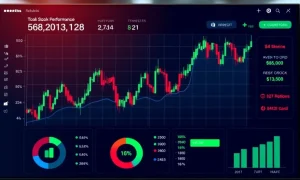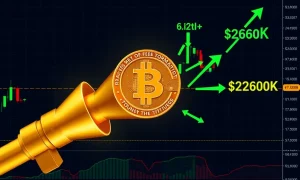Investors worldwide are watching financial indicators with heightened concern. However, one experienced fund manager reveals that record margin debt levels might not signal immediate danger. Conversely, long-term inflation presents a more substantial threat to market stability and investment portfolios.
Understanding Margin Debt Dynamics
Margin debt recently reached unprecedented levels across global markets. Many analysts initially viewed this development as alarming. Nevertheless, our expert source provides crucial context about this financial metric. Margin debt essentially represents borrowed funds used for purchasing securities. Historically, elevated levels sometimes preceded market corrections. However, current economic conditions differ significantly from previous cycles.
Why Margin Debt Isn’t the Primary Concern
The fund manager emphasizes several factors that mitigate margin debt risks. First, institutional investors now dominate margin usage rather than retail traders. Second, regulatory frameworks have strengthened considerably since previous crises. Third, overall market liquidity remains robust despite debt levels. Consequently, these elements combine to reduce immediate systemic risks.
The Real Threat: Long-Term Inflation
Persistent inflation emerges as the more significant danger according to our expert. Unlike margin debt, inflation erodes purchasing power consistently. It affects all asset classes and investment strategies. Moreover, central banks face difficult choices combating inflation without triggering recessions. This complex situation demands careful portfolio management and strategic positioning.
Investment Strategies for Current Conditions
Investors should consider several approaches in this environment. Focus on inflation-resistant assets like real estate and commodities. Maintain diversified portfolios across sectors and geographies. Regularly reassess risk exposure and adjust positions accordingly. Additionally, consider Treasury Inflation-Protected Securities (TIPS) for bond allocations.
Expert Risk Assessment Framework
The fund manager outlines a comprehensive risk evaluation methodology. Monitor inflation indicators more closely than margin statistics. Assess economic fundamentals rather than following sentiment-driven metrics. Implement hedging strategies against currency devaluation. Furthermore, maintain long-term perspective despite short-term market fluctuations.
Market Outlook and Projections
Current analysis suggests cautious optimism despite challenges. Economic growth continues in most major economies. Corporate earnings generally remain strong across sectors. Technological innovation drives productivity gains globally. However, investors must remain vigilant about inflationary pressures and policy responses.
Conclusion: Balanced Perspective Essential
Successful investing requires distinguishing between real threats and false signals. Record margin debt levels currently fall into the latter category according to expert analysis. Long-term inflation demands greater attention and strategic planning. Investors should focus on fundamental analysis and disciplined risk management.
Frequently Asked Questions
What exactly is margin debt?
Margin debt represents borrowed money that investors use to purchase securities, leveraging their existing capital to potentially amplify returns.
Why isn’t record margin debt concerning currently?
Several factors reduce concern: institutional dominance, stronger regulations, and overall market liquidity provide stability despite high levels.
How does long-term inflation affect investments?
Inflation erodes purchasing power over time, reduces real returns on fixed-income investments, and necessitates different asset allocation strategies.
What assets perform well during inflationary periods?
Real estate, commodities, inflation-protected securities, and equities of companies with strong pricing power typically outperform during inflationary environments.
Should individual investors use margin trading currently?
Most experts caution against excessive leverage given current market conditions and recommend conservative positioning with emphasis on risk management.
How often should investors reassess their inflation protection strategies?
Quarterly reviews are recommended, with more frequent monitoring during periods of significant economic policy changes or inflation data releases.








